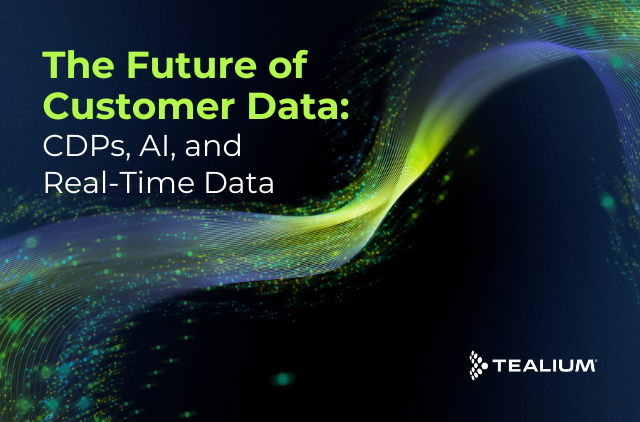In our blog post, Deterministic versus Probabilistic Matching in Life Sciences, we will cover the two types of identity matching: Deterministic and Probabilistic. We will learn what they are, their differences, and the benefits of each. We will also cover how Life Science companies can best resolve the identities of HCPs that visit their digital properties. Should they use a probabilistic approach, deterministic, or a mixture of both? Let’s dive in!
The Background on Deterministic versus Probabilistic Matching
We often hear similar questions and statements when talking to marketers who are beginning their digital transformation with a company. They can include:
- “Our vendors assure us that their matching algorithm can resolve, with reasonable accuracy, the identity of the HCPs that we are trying to engage digitally.”
- “Why miss the opportunity to adequately engage visitors just because we don’t exactly know who they are?”
- “Is deterministic matching better than probabilistic matching?”
If you are a marketer in Life Sciences wondering about deterministic versus probabilistic matching, keep in mind that while each approach has its advantages, the two are not interchangeable. Let’s learn more about each type, their differences, benefits, etc.
Deterministic Matching
Deterministic matching is used to find an exact match between two records. This technique looks for one or more unique identifiers in the records that have matching values. The idea is to identify the same user across different communication channels.
For example, if a user logs into multiple devices with their email address (which is unique to them), we can easily determine that it is them. Regardless of the specific identifier(s) used, deterministic matching yields an accuracy of 100%.
Probabilistic Matching
What if there is no single field that can yield an exact match? This is where probabilistic matching comes into play. Several fields are compared between the two records. Probability and statistics are typically applied in determining the likelihood of a match between the two records.
What Should Be the Foundation of HCP Identity?
When it comes to the reliable identification of HCPs, deterministic matching should be the foundation. Let’s examine the reasons why.
Probabilistic matching is a useful tool for determining an online visitor’s identity in the absence of unique identifiers. Does this mean it is safe to use in the Life Sciences industry?
The answer: Not exactly.
It is a well-known fact that Life Sciences is a heavily regulated industry. Unlike other industries, targeting the wrong individual with marketing messages on sensitive medical conditions might lead to violating existing privacy laws.
For example, let’s say there are two individuals, both named Jane Smith, who live in Pennsylvania. They share the same zip code and belong to the same age group. However, one of them is a Pulmonologist and the other is a cystic fibrosis (CF) patient.
If your company has a treatment for CF and you were able to probabilistically determine that a certain Jane Smith from Pennsylvania visited your website, how can you be sure that it is the Pulmonologist Jane Smith and not the CF patient Jane Smith? And what if you mistakenly deliver medical information to CF patient Jane Smith, and she sees this as a privacy violation? Getting this wrong may lead to legal complications. You’ll want to ensure that you get this right, to deliver a great customer experience while staying compliant.
The answer to this predicament lies in deterministic matching. Accurately knowing the identity of the HCPs that visit your digital properties means you can deliver relevant messages that help improve patient outcomes while remaining privacy compliant.
Since we can reliably identify an HCP when they appear on a specific channel, we can also take advantage of the HCP’s content preferences, research insights, etc. gleaned from other channels. As a result, an email campaign targeted at an HCP can take into account the HCP’s behavior on a brand website, an HCP portal can take into account the HCP’s email preferences, and so on.
How Can Probabilistic Matching Benefit Life Sciences?
Does probabilistic matching have no place in Life Sciences? Of course not.
Once deterministic matching becomes the foundation of your HCP identity framework, probabilistic matching can be a useful tool in enriching existing insights on the HCP.
As we discussed above, deterministic matching relies on unique identifiers. While this is great for gaining insights on the HCP from channels where such identifiers are available, it may not give you a full picture of the HCP’s preferences and of the medical content they consume, as not all channels involve identifiers that are unique to an HCP.
By using probabilistic matching, we can resolve these HCPs’ identities with reasonable accuracy when they engage with such channels. As a result, behavioral data from these channels can enrich existing profiles of HCPs.
The next time the HCP shows up on a channel where they can be identified with 100% accuracy, we can put these newly learned behavioral insights to use. Thus, companies can reap the benefits of probabilistic matching without the downsides.
What Products Help With Deterministic Matching?
Deterministic matching is a key tenet at Tealium. Our Tealium for Pharma product further extends our core matching capability to Life Sciences by integrating with leading vendors that specialize in HCP Identity data.
Using these integrations, not only can our customers reliably identify HCPs that engage with their digital properties, but now that they know exactly who the HCP is, they can leverage behavioral insights and content preferences of the HCP to deliver a tailored experience to the HCP in real-time.
In addition, Tealium comes with an Identity Partner Ecosystem which includes integrations with vendors that offer probabilistic matching. Our customers can take advantage of these technologies to further enrich the HCP behavioral insights they already have access to.
Key Takeaways
Life Science marketers looking to transform digitally often grapple with the question of deterministic versus probabilistic matching when dealing with anonymous traffic to their digital properties. Deterministic matching aims to determine the identity of a visitor with 100% accuracy, whereas probabilistic matching applies probability and statistics to determine the likelihood of a match.
While both approaches have their pros and cons, in a regulated industry such as Life Sciences, when attempting to resolve the identity of an HCP, deterministic matching is the clear winner for a variety of reasons. Probabilistic matching, however, can be a useful tool to enrich behavioral data for HCPs whose identities are known.
Tealium for Pharma has integrations with leading vendors of HCP Identity data. The largest life science companies rely on Tealium for Pharma for their digital marketing efforts. To explore related resources, check out ‘No See’ Healthcare Professionals (HCPs) and How to Engage Them, the Tealium and Indegene partnership, and The Future of Pharma is Data-Centric.








